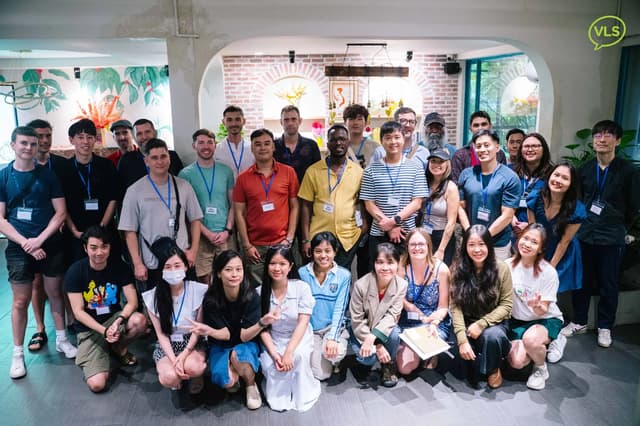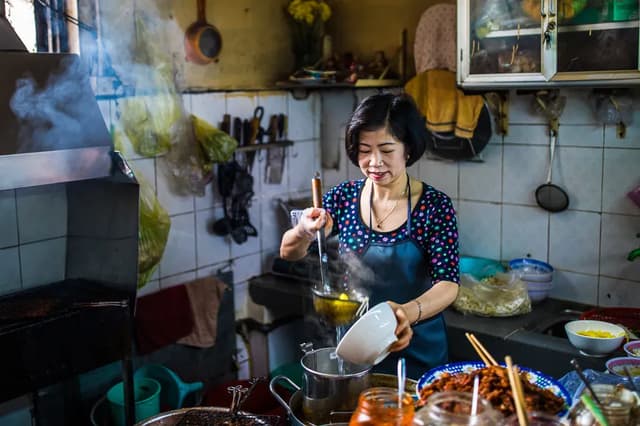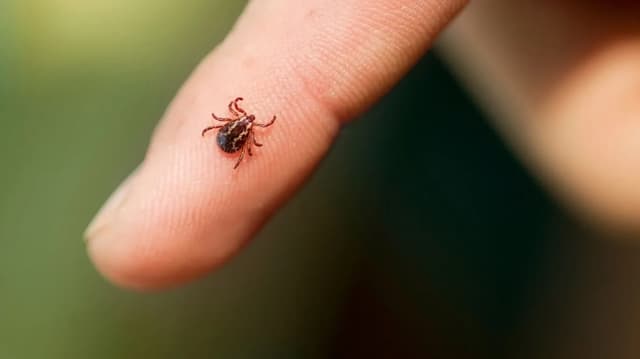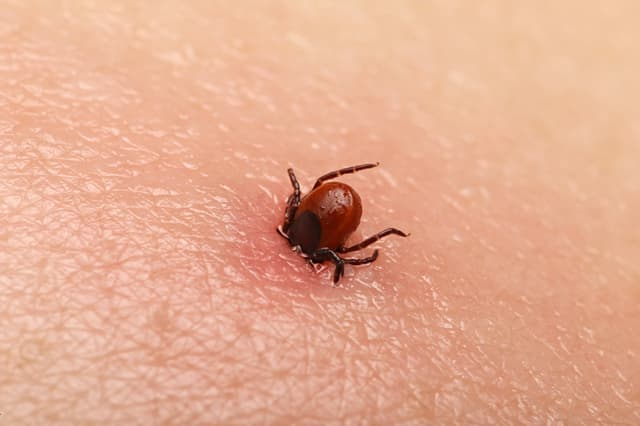Some features of the Bru-Van Kieu ethnic group
25/12/2024
Vietnamese ethnic groupsDelve into the culture and customs of the Bru-Van Kieu people in Central Vietnam, from beliefs, costumes to daily life.
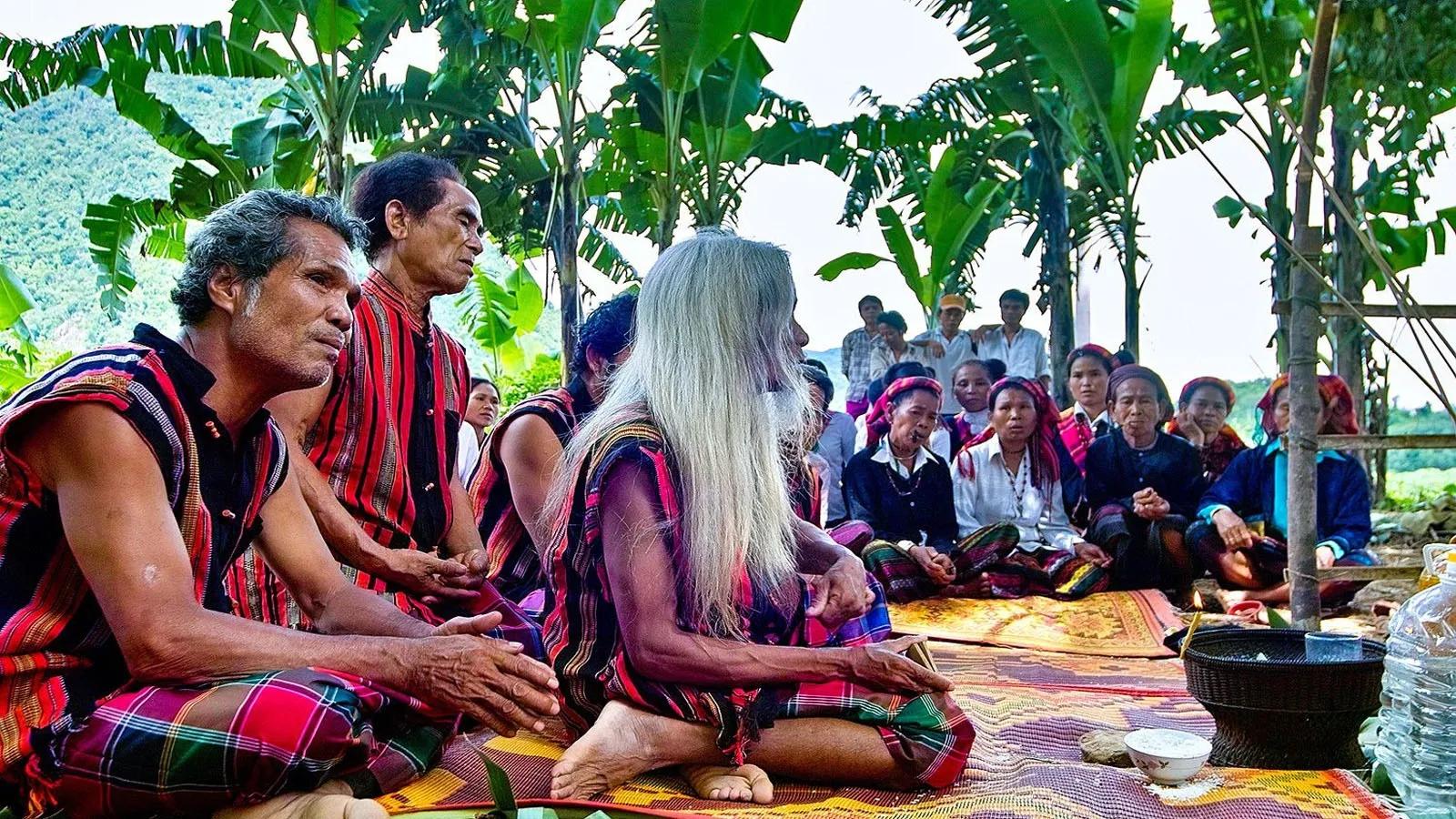
Living for a long time in the majestic Truong Son mountain range, the Bru-Van Kieu people have a very unique spiritual life. And a special thing is that most of the Van Kieu people in the north central region have taken President Ho Chi Minh's surname Ho as their common surname to show their respect for him. Let's find out information about the Bru-Van Kieu ethnic group in Vietnam with iGuide.ai!
1. Historical origins of the Bru-Van Kieu people
Currently, there are two different opinions about the origin of the Bru-Van Kieu people, but most opinions agree that they are indigenous people who have lived for a long time in the Central Indochina region. After historical changes, they migrated to many places, of which a part went east and settled in the western part of Quang Tri province of Vietnam. The Bru-Van Kieu people are also known as Bru, Van Kieu, divided into 5 local groups: Bru, Van Kieu, Mang Cong, Tri and Khua.
2. Geographical distribution of the Bru-Van Kieu people
The Bru-Van Kieu people live in 39/63 provinces and cities, but are mainly concentrated in 3 provinces: Quang Tri, Quang Binh and Thua Thien Hue. In addition, a small number of Bru-Van Kieu people currently live in Dak Lak due to forced migration by the US-puppet regime in 1972.
3. Population and language of the Bru-Van Kieu people
- Population: According to the survey data of 53 ethnic minorities on April 1, 2019, the total population of Bru-Van Kieu people: 94,598 people; male population: 47,301 people; female population: 47,297 people; household size: 4.5 people/household; proportion of population living in rural areas: 91.9%.
- Language: The Bru language is Bru, a language belonging to the Mon-Khmer group (Austroasiatic language family), close to the Ta Oi and Co Tu languages.
4. Social and cultural characteristics of the Bru-Van Kieu people
- Traditional social institutions: The Bru-Van Kieu people live in Vil (village). Each vil has an organizational apparatus to operate and manage all community activities with the head being the village chief. Assisting the village chief in managing community activities is the village elder council (including the village chiefs and the village chiefs). The traditional society of the Bru-Van Kieu also has a village chief, who is the head of the village (kruong), who has the merit of discovering new land and founding the village. With the form of collective ownership, all members of the vil have the right to own and exploit all land resources, forests, mountains, rivers, streams, etc. within the scope of the vil.
- Housing: The traditional house of the Van Kieu people is a small stilt house (usually consisting of 3 or 4 rooms), divided into 2 distinct parts, separated by a conventional bamboo fence and connected by a side door. The outer part usually consists of 2 rooms called: pum (outside, near the entrance) and poong (inside, place of worship).
- Costume: According to custom, Bru-Van Kieu men often wear loincloths with headscarves; women wear sleeveless shirts with round or square necklines, and skirts (xan) which are a whole piece of cloth wrapped around the body and tied tightly with cloth strings. Bru-Van Kieu men and women all wear their hair in a bun.
5. Religion, beliefs and customs of the Bru-Van Kieu people
- Religion and beliefs: According to tradition, the Bru-Van Kieu people attach great importance to ancestor worship, and also worship deities such as rice god, kitchen god, mountain god, earth god, river god. The Van Kieu people perceive the worldview that all things have spirits. Therefore, rice god and river god are arranged in order to be worshiped in the house and in the forest with the purpose of praying for favorable weather and good crops. In particular, the rice god is raised to the highest level and is worshiped with many important rituals. The Bru-Van Kieu people still preserve many unique festivals.
- Cuisine: The Bru-Van Kieu people like grilled dishes. They eat plain rice every day. On festivals, they eat sticky rice cooked in fresh bamboo tubes. The Van Kieu people are used to eating with their hands, drinking water and rice wine. Both men and women like to smoke tobacco with pipes made from clay or bamboo.
- Musical instruments: Popular musical instruments of the Bru-Van Kieu people are: gongs, cymbals, Achung, Plu, Ta-lu, Amam trumpets, Ta-ral, etc.
6. Education, marriage and festivals of the Bru-Van Kieu people
- Education: Previously, school education did not exist in the Bru - Van Kieu area. But with the investment of the State and non-governmental organizations, the education situation of the Van Kieu people has had positive changes. According to the survey data of 53 ethnic minorities on April 1, 2019: the rate of people aged 15 and over who can read and write is 66.7%, the rate of people attending primary school is 101.9%, the rate of people attending lower secondary school is 86.9%, the rate of people attending upper secondary school is 33.2%, the rate of out-of-school children is 19.3%.
- Marriage: Among the Bru-Van Kieu ethnic group, after getting married, the bride moves to live with her husband's family. After the wedding, the couple must have a second "wedding ceremony" when they have the financial means, called the Khoi ceremony, so that the wife is officially considered a member of the husband's family.
- Festivals: The Bru-Van Kieu people have many different ceremonies during the process of cultivating upland rice to pray for a good harvest, associated with the stages of clearing, sowing and harvesting. In particular, the ceremony before sowing rice takes place like a festival of the villagers. In a person's life, each person also has a series of ceremonies about themselves such as: when they are born, when they are sick, when they pass away, when they get married, etc.
7. Economic conditions of the Bru-Van Kieu people
For generations, the Bru-Van Kieu people have lived mainly by slash-and-burn cultivation and rice cultivation. They use rudimentary agricultural tools such as axes, machetes, pruning sticks, etc. with simple production methods: clearing forests, burning, then making holes to sow seeds, weeding, and threshing rice by hand. In addition to agriculture, the Bru-Van Kieu also raise buffalo, cows, pigs, chickens, etc. They do not develop handicrafts and mainly exchange goods with the Vietnamese and Lao people.
According to the survey data of 53 ethnic minorities on April 1, 2019: Bru-Van Kieu ethnic group has: Unemployment rate of 2.82%; Rate of trained workers with degrees and certificates: 4.5%; Rate of workers working in the non-agricultural sector: 8.4%; Rate of workers working in management or high and middle-level technical and vocational training: 0.12%; Rate of poor households: 56%; Rate of near-poor households: 12.4%; Rate of households using clean water sources: 48.5%; Rate of households using grid electricity for lighting: 93.8%.
Above is some interesting information about the Bru-Van Kieu ethnic group in Vietnam. Let's plan to explore, meet and experience the culture of the Bru-Van Kieu people with iGuide.ai in the near future!
Source:
- Ethnic groups in Vietnam (National Political Publishing House Truth)
- Basic characteristics of 54 ethnic minorities in 2019 (Committee on Ethnic Minorities and General Statistics Office)
- Website of the Ethnic Committee, Website of Nhan Dan Newspaper
- Survey results collect information on the socio-economic status of 54 ethnic groups in Vietnam)
Essential Vietnamese Phrases for Tourists: A Guide to Communicating in Vietnam
By Admin
04/10/2024
Start your Vietnam adventure with confidence by mastering key phrases that will enhance your travel experience. While fluency is not required, knowing essential expressions can improve your safety and interactions with locals, providing a deeper connection to Vietnam’s rich culture. From basic greetings to directions, these phrases will help you communicate effectively and show respect for local customs. Take the opportunity to enrich your trip by engaging in Vietnam’s vibrant language and traditions.
Mẹo an toàn thực phẩm và nước uống thiết yếu cho du khách ở Việt Nam
By Duc Anh
04/10/2024
Culinary Journey
Khám phá những mẹo quan trọng về an toàn thực phẩm và nước để nâng cao trải nghiệm du lịch của bạn tại Việt Nam. Tìm hiểu cách chọn lựa các lựa chọn ăn uống an toàn, xử lý sản phẩm tươi sống và điều hướng an toàn nước để có một chuyến đi không phải lo lắng.
Ways to prevent ticks and lice
By Duc Anh
04/10/2024
Learn effective ways to minimize exposure to ticks and protect against tick-borne diseases. Discover how to prevent tick bites before and after outdoor activities and implement landscaping techniques to create a tick-safe environment around your home. Stay informed and safe during peak tick activity months.
Comprehensive Guide to Tick Bite and Lyme Disease Prevention
By Admin
04/10/2024
Discover effective ways to prevent tick bites and Lyme disease with our comprehensive guide. Learn about personal protective behaviors, the importance of regular tick checks, and how to use effective tick repellents. Discover insights into tick behavior, best practices for tick removal, and safe repellent options for maximum protection during outdoor activities.

